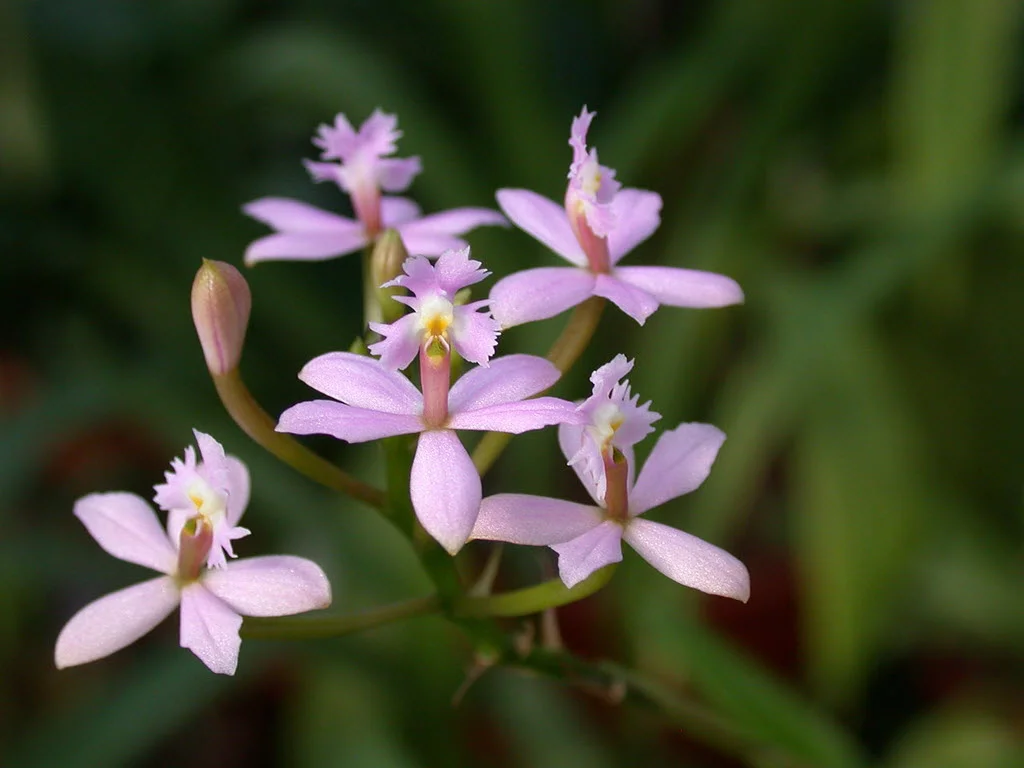Table of Contents
Pronunciation: Den-DRO-bee-um
Introduction
Dendrobium orchids are one of the most well-known orchid genera, as well as one of the largest. One of their best identifying features are their long, pipe-like pseudobulbs which look a lot like bamboo shoots.
Dendrobium Anosmum
There are over 1,000 species of orchids in this genus, and they're native to Australia, New Guinea, and tropical and subtropical Asia. Given this incredible variety, care can vary significantly from orchid to orchid, and it's important to know which orchid you have in order to be successful in cultivating it.
Temperature
Your orchid's temperature requirements can vary significantly, but most Dendrobium you will find being sold in flower shops and supermarkets like to have intermediate temperatures. During the daytime, you want to keep your temperatures between 65°F and 75°F (18°C to 24°C).
They can tolerate slightly lower nighttime temperatures that range between 55°F and 60°F (13°C to 16°C). They don't tolerate freezing temperatures, and they can die very quickly if the temperatures fall below 32°F (0°C).
Light
Most of the orchids in this genus like very bright but indirect sunlight. Place your orchids in a bright east or south-facing window, so they get the morning sunlight. You may want to provide shade structures like netting if your orchid encounters direct sunlight throughout the day.
If you notice that your plant's leaves are turning a reddish-brown color, they're getting too much sun, and you have to adjust them. It's best to experiment and see how much sun your orchid will tolerate depending on the species. When you've found the best amount, give them as much sunlight as they can tolerate.
Water and Humidity
These plants like an intermediate amount of water, and you can usually get by with watering them every two or three days. They also like to dry out between watering, so you may need to adjust your watering schedule based on your humidity and temperatures.
Additionally, after your orchid blooms, it drops its flowers and enters a rest period. You'll want to water it sparingly until you see new growth, so you can cut back your watering to once a week or once every ten days. They need just enough water to keep their pseudobulbs from shriveling up, and the humidity levels can range from 50% to 70%.
Feeding
During the growing season, Dendrobium orchids like to get fertilized once a week with a well-balanced fertilizer mix. You can dilute this to half strength by mixing one teaspoon of your fertilizer into a gallon of water and feeding it to your plant.
When your orchid drops its flowers and enters its resting period, it won't need fertilizer. You can stop feeding your orchid until you see growth start in the spring. Once you see this new growth forming, you can resume your normal once a week feeding schedule to encourage new growth.
Potting
These orchids like to be slightly underpotted with their roots filling the pot, but this can make your orchid top-heavy and prone to tipping over. This is why it's a good idea to use heavier clay pots instead of plastic pots because they'll provide better support.
Your potting medium should be a fast-draining mix of fir bark, coconut husks, perlite, and sphagnum moss. This will drain quickly but retain enough moisture to keep your plants moist between watering. You can repot them in the spring every one to two years as they outgrow their pots.
Video
Let's watch Dani from Miss Orchid Girl as she talks about care tips — watering, fertilizing, and reblooming — for Dendrobiums.
If you want to expand your collection with orchids that have peculiar characteristics like scent or pollination, check out our our comprehensive list of the different types of orchids.
Discover New Orchids











